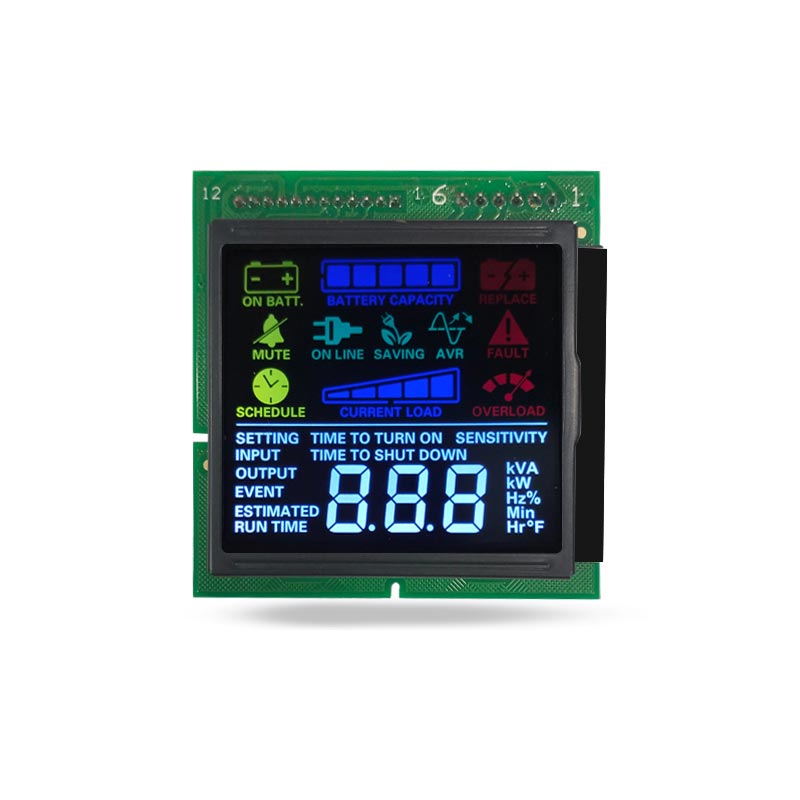What Are the Different Types of LCD Displays?
2025-02-22
Liquid Crystal Displays (LCDs) are widely used in everything from smartphones and televisions to industrial equipment and medical devices. However, not all LCDs are the same—there are different types, each designed for specific applications. In this blog, we’ll explore the most common types of LCD displays and their key characteristics.
1. Twisted Nematic (TN) LCD – Affordable and Fast
TN LCDs are one of the most common and cost-effective types of LCD displays. They use twisted nematic liquid crystals that respond quickly to electrical signals, making them ideal for applications requiring fast refresh rates.
Pros:
✔️ Fast response time, great for gaming monitors
✔️ Low power consumption
✔️ Affordable
Cons:
❌ Limited viewing angles and poor color accuracy
❌ Not ideal for professional color work
Best For: Budget-friendly monitors, calculators, and older gaming screens.

2. In-Plane Switching (IPS) LCD – Superior Color and Viewing Angles
IPS technology improves upon TN by aligning liquid crystals parallel to the screen, enhancing color accuracy and viewing angles. This makes it a preferred choice for high-end monitors and smartphones.
Pros:
✔️ Excellent color reproduction
✔️ Wide viewing angles
✔️ Better contrast than TN panels
Cons:
❌ More expensive than TN panels
❌ Higher power consumption
Best For: Professional design work, smartphones, and premium monitors.
3. Vertical Alignment (VA) LCD – High Contrast and Deep Blacks
VA panels position liquid crystals vertically when inactive, leading to higher contrast ratios compared to TN and IPS. This results in deeper blacks and richer colors, making them ideal for entertainment purposes.
Pros:
✔️ Better contrast and deeper blacks than TN and IPS
✔️ Wider viewing angles than TN panels
✔️ Ideal for watching movies and gaming
Cons:
❌ Slower response times than TN panels
❌ More expensive than TN but cheaper than IPS
Best For: Televisions, gaming monitors, and multimedia screens.
4. Super Twisted Nematic (STN) LCD – Energy Efficient for Basic Displays
STN LCDs were developed to improve upon TN panels, offering better contrast and lower power consumption. However, they are mainly used in monochrome applications due to their limited color reproduction.
Pros:
✔️ Lower power consumption than TN
✔️ Better contrast than standard TN panels
Cons:
❌ Slower response time
❌ Poor color reproduction
Best For: Industrial equipment, calculators, and low-power devices.
5. Thin-Film Transistor (TFT) LCD – Common in Modern Displays
TFT LCDs use active matrix technology, meaning each pixel is controlled by a thin-film transistor. This results in better image quality, faster refresh rates, and sharper visuals compared to traditional passive matrix LCDs.
Pros:
✔️ Sharp images and bright displays
✔️ Faster refresh rates
✔️ Suitable for a wide range of applications
Cons:
❌ Higher power consumption than STN and TN
❌ More expensive than basic TN panels
Best For: Smartphones, tablets, and modern computer monitors.
6. OLED vs. LCD – What’s the Difference?
While not technically an LCD, OLED (Organic Light Emitting Diode) displays are often compared to LCDs. Unlike LCDs, OLEDs don’t require a backlight, allowing for deeper blacks and more vibrant colors. However, LCDs remain more cost-effective and energy-efficient for many applications.
Which LCD Type Should You Choose?
- For gaming: TN (for speed) or IPS (for visuals)
- For professional work: IPS (for accuracy)
- For watching movies: VA (for contrast)
- For industrial applications: STN or TFT
LCD technology has come a long way, offering a variety of options for different needs. Whether you need a display for gaming, professional work, or everyday use, there’s an LCD type that fits your requirements.
JINGDA-DISPLAY is a professional monochrome LCD display manufacture and LCM module supplier in China, we are specialized in manufacturing LCD Display for more than 10 years. The Company has a strong market position, particularly in Monochrome LCD and OLED Display.Visit our website at www.jda-display.com to learn more about our products. For inquiries, you can reach us at vincent@jdadisplay.com.




